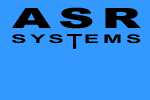

 |
|
 |
|
Lake Okeechobee, Florida Source Number: 2.1.1 Source Description
Key Words Executive Summary A water sample collected at the end of a 24-hour pumping test on the ASR well, prior to any recharge activities, indicated a total dissolved solids (TDS) concentration of 7,410 milligrams per liter (mg/l). Background ambient water temperature in the ASR well was 27°C. The storage zone is a confined limestone artesian aquifer with static water level above land surface. Approximately 60 percent of the well production occurs in an interval between 1,300 and 1,340 feet, while 29 percent occurs at 1,570 to 1,630 feet. Water quality deteriorates with depth. Packer testing of an interval between 1,288 to 1,354 feet indicated a TDS of 4,000 mg/l, while an interval from 1,540 to 1,662 feet indicated 6,710 mg/l TDS. From June 1 through November 4, 1989, four test cycles were conducted, during each of which water was pumped from the canal down the well at typical rates of about 5 million gallons per day (MGD). After a short storage period (for three of the four cycles), the water was recovered by gravity flow at rates typically varying between 3 and 5 MGD. Extensive data were collected during each cycle regarding flows, volumes, and water quality for a broad range of constituents. Tables 1 through 4 present data collected during each of the four cycle tests and are presented in this summary in Adobe .pdf format. These tables are discussed in the text that follows. During Cycle 1, 23 million gallons (MG) were recharged within five days without chlorination. The water was stored for one day, and then 34 MG were recovered by gravity flow during a 10-day period in June 1989. Recharge water ranged in conductivity from 1,250 to 1,350 micromhos per centimeter (umhos/cm), or an estimated TDS of about 850 mg/l. Recharge water temperature was about 30oC. Three samples were collected and analyzed for total coliform bacteria, with results of 110, 80, and 80 colonies/100 milliliters (ml), respectively. Recovery samples had total coliform concentrations of 21, 6, and <2 colonies/100 ml (the method detection limit), respectively, at the beginning of recovery, one day and two days later. Fecal coliform data for the same sampling events indicated recharge concentrations of 110, 23, and 30/100 ml, while samples collected the first three days of recovery had concentrations of 8, 4, and <2/100 ml. All remaining recovery samples were non-detect for both total and fecal coliforms, except for a sample on the last day, which showed 7/100 ml for each. Cycle 1 extended from June 1 to June 17, 1989. During Cycle 2, 25 MG were recharged within five days, without chlorination, followed by a 7-day storage period. Thirty-five MG were then recovered over a 10-day period. Recharge water TDS ranged from 830 to 996 mg/l, and temperature ranged from 29 to 32°C. A sample of the recharge water was tested for total and fecal coliforms, with concentrations reported at 80 and 50/100 ml, respectively. Four samples of the recovered water were analyzed, indicating no fecal coliforms. Total coliforms were present in two of the samples at concentrations of 4 /100 ml. Cycle 2 extended from June 17 to July 9, 1989. During Cycle 3, 25 MG were recharged in five days without chlorination, followed by a storage period of 28 days. Recovery of 33 MG continued for 10 days. Recharge water quality included TDS ranging from 691 to 758 mg/l and a temperature of 26 to 30°C. One microbiota sample was analyzed during recharge, indicating total and fecal coliform concentrations of 70 and 23/100 ml, respectively. Six microbiota samples were analyzed during recovery, indicating non-detect for fecal coliforms in all samples. Total coliforms were present in four of the six samples at concentrations of <2 /100 ml, which are below the detection limit of 2 /100 ml. Cycle 3 extended from July 9 to August 21, 1989. During Cycle 4, 91 MG of water was recharged with chlorination during a 20-day period. One hundred and forty-four MG were recovered with no storage period. TDS of the recharge water ranged from 268 to 336 mg/l, while temperature ranged from 27 to 30oC. Three microbiota samples were analyzed during recharge, indicating total coliform concentrations of 130, 23, and 30 /100 ml and fecal coliform concentrations of 80, 8, and 8 /100 ml, respectively, from the detention basin after chlorination but prior to recharge. After one day of recovery, fecal coliforms were present in the recovered water at a concentration of 14 /100 ml; however, all four subsequent samples were non-detect for fecal coliforms. Total coliforms were present in the recovered water at concentrations ranging from non-detect to 36 /100 ml, with the highest concentrations at the beginning and end of recovery. Cycle 4 extended from September 6 to November 4, 1989. Additional testing of this well was subsequently conducted by the U.S. Geological Survey; however, testing did not address microbiota attenuation during ASR storage. Graphics
and Tables Table
1. ASR Cycle 1 Water Quality Results - Cycle Period: June 1 - 17,
1989 Contact Information Source Documents |